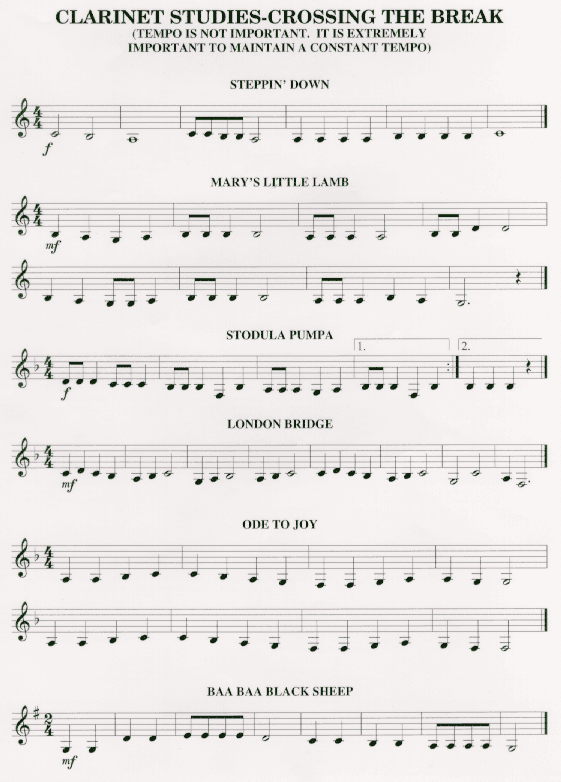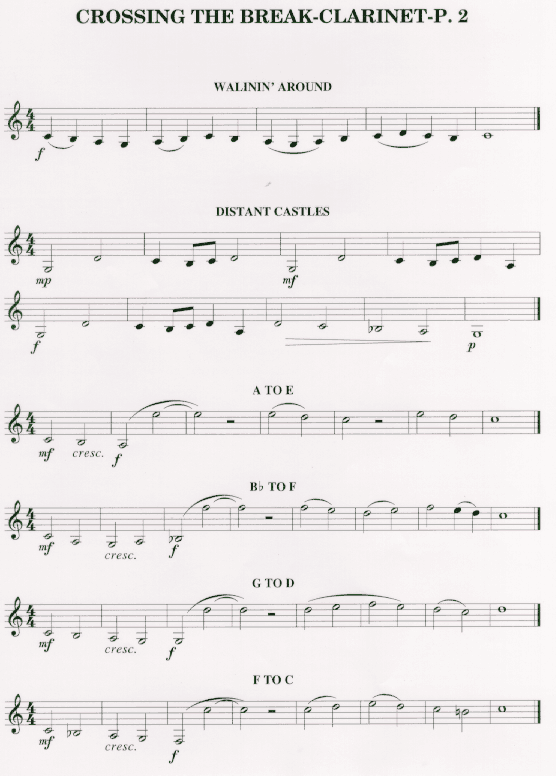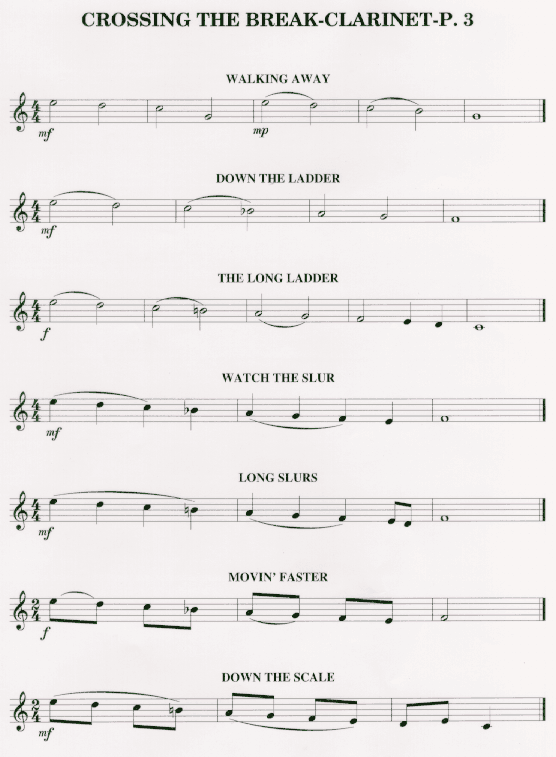Crossing the break is often one of the major problems a clarinet student may have. There are many reasons for this. This section of clarinet study will deal with that problem, and try to eliminate or at least ease the problem with which band directors are often faced.
Band directors sometimes make too big a deal about it. Do not start out by telling a student that they are about to reach a very difficult part of clarinet playing. If you do, your predication will come true. Do not scare them before they have even tried to play over the break. The exercises at the end of this section will better prepare them for high notes, and you do not have to warn them of difficulties that may not exist for them.
Some students have very small fingers, and they have a hard time covering the holes completely. If that is the case, work with them, show them where to put their fingers by moving their fingers over the holds. As they grow, of course, this problem will disappear.
The following exercises require that students cover the holes completely. If they do not, they will hear an unfocused, poor quality sound. Fortunately, they will get a sound even if they are not covering the holes properly. This will give them a chance to notice the "fuzzy" sound, and adjust their fingers until the sound is better. It is important that at this time, you observe and make sure that the left thumb is in the proper position. If they get in a good habit now, it will be much easier for them to play the high notes. It is a good idea that you have been reminding them as needed from the very beginning to try and put their thumb in the proper had position.
By this time, the students should be playing a strength 2 1/2 or 3 reed. A better quality mouthpiece and reed will also be very helpful.
Pay attention to good posture and embouchure. Sitting up straight, holding the clarinet with the bell around knee level, with a good tight lipped embouchure around the mouthpiece will be very helpful.
Playing low notes is the key to playing above the break. Some of the beginning band methods published in recent years have included exercises with songs written in the lower registers. However, many of the older books spend little time preparing the students for playing above the break. I suggest that when reviewing a method book, give priority to a book that has the clarinets playing in the low register at least three pages before they start to play above the break. Never choose a book that has a clarinet player playing up the break. Playing down the break is easier, and it will help the students get the right hand position. Later, going up the break will be easy. If the students start with a very negative experience they will want to quit. Playing above the break does not have to be difficult, but it must be approached properly.
When you reach the section where the clarinets cross the break, you may wish to copy the following exercises, and have the clarinet players practice these pages before continuing in the band method book. It is extremely important they play the following exercises in the exact rhythms, and keep a steady tempo at all times. Speed is not important. Rhythmic motion will help insure a good hand position. Going slowly is far more important and helpful than trying to play quickly. Again do not make this a big deal. Just tell them these songs are for fun.
CLARINET STUDIES - CROSSING THE BREAK






